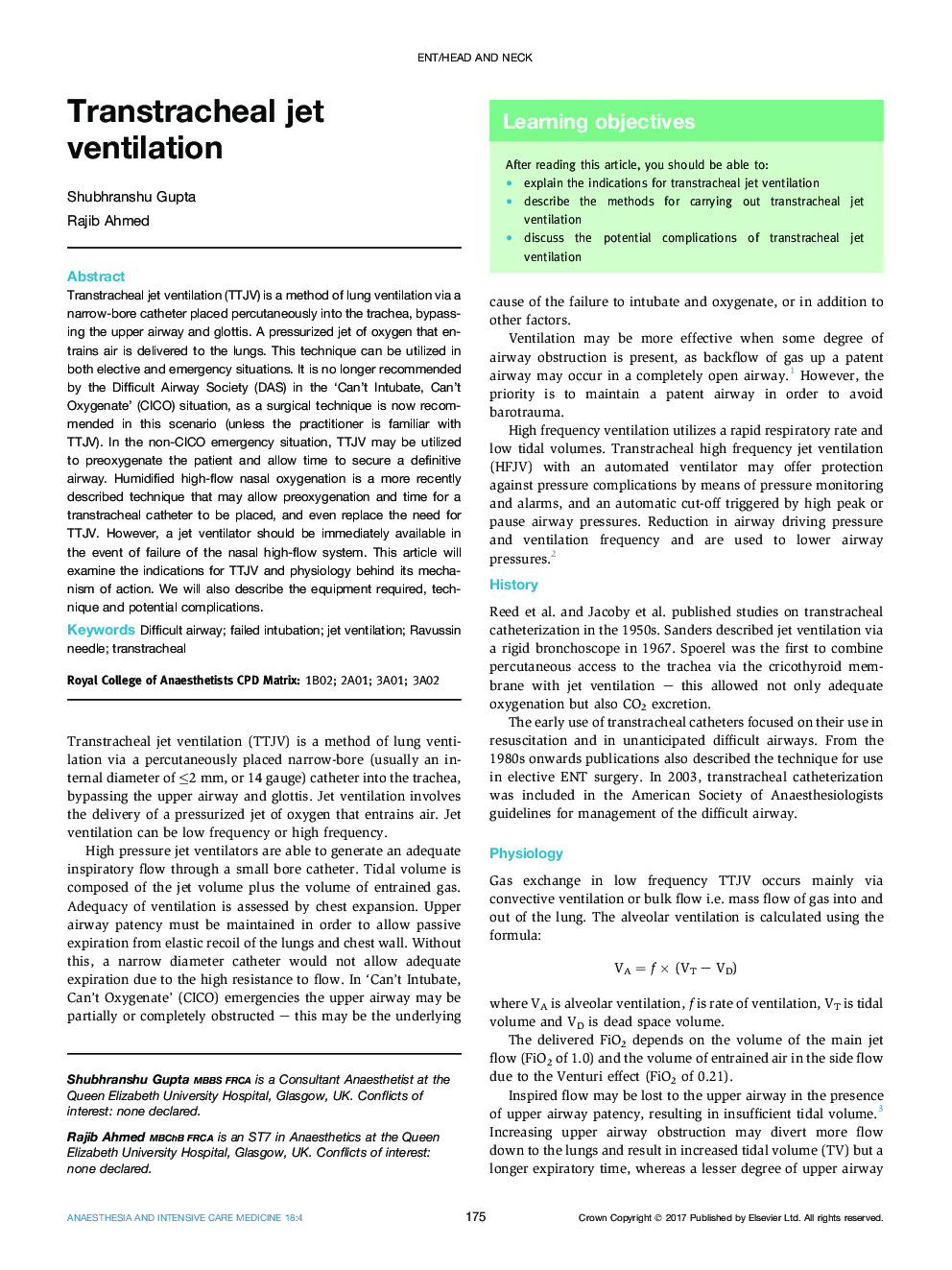| Article ID | Journal | Published Year | Pages | File Type |
|---|---|---|---|---|
| 5580207 | Anaesthesia & Intensive Care Medicine | 2017 | 5 Pages |
Abstract
Transtracheal jet ventilation (TTJV) is a method of lung ventilation via a narrow-bore catheter placed percutaneously into the trachea, bypassing the upper airway and glottis. A pressurized jet of oxygen that entrains air is delivered to the lungs. This technique can be utilized in both elective and emergency situations. It is no longer recommended by the Difficult Airway Society (DAS) in the 'Can't Intubate, Can't Oxygenate' (CICO) situation, as a surgical technique is now recommended in this scenario (unless the practitioner is familiar with TTJV). In the non-CICO emergency situation, TTJV may be utilized to preoxygenate the patient and allow time to secure a definitive airway. Humidified high-flow nasal oxygenation is a more recently described technique that may allow preoxygenation and time for a transtracheal catheter to be placed, and even replace the need for TTJV. However, a jet ventilator should be immediately available in the event of failure of the nasal high-flow system. This article will examine the indications for TTJV and physiology behind its mechanism of action. We will also describe the equipment required, technique and potential complications.
Related Topics
Health Sciences
Medicine and Dentistry
Anesthesiology and Pain Medicine
Authors
Shubhranshu Gupta, Rajib Ahmed,
